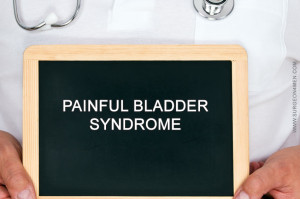Urinary Incontinence Treatments
Urinary incontinence can be described as a medical condition that is characterized by poor control of the bladder and is associated with an unintentional loss of urine. People who suffer from urinary incontinence are not able to prevent urine from leaking out of the urethra. It is a common problem and it affects more than a million people worldwide. Though urinary incontinence is found in both men as well as women, it is more common in women.
There are two types of urinary incontinence, depending upon the symptoms exhibited by the patient. These include: Stress Incontinence and Urge Incontinence. Stress incontinence is observed when urine tends to leak out when the bladder is under pressure, for instance while coughing or laughing. Urge incontinence is observed when urine leaks out the moment you feel the intense, sudden urge to urinate.
Urinary incontinence is typically caused by the damage or weakening of the muscles that are responsible for preventing urination. The muscles that are important for preventing urination include the pelvic floor muscles and the urethral sphincter. At times, the overactivity of the detrusor muscles can also lead to urinary incontinence.
 Treatment of Urinary Incontinence
Treatment of Urinary Incontinence
Depending on the severity of symptoms exhibited by the patient, urinary incontinence can be treated in the following ways:
- Non-surgical treatment
- Surgical treatment
Urinary Incontinence Treatment – Non-surgical
The non-surgical treatment for urinary incontinence involves the following steps:
- Lifestyle Changes: Your healthcare provider might ask you for making certain lifestyle changes such as reducing intake of caffeine, modifying the fluid intake amount in a day, and losing weight.
- Bladder Training: Bladder training involves learning of techniques that require a gradual increase in time between feeling the urge to urinate and the actual act of passing the urine.
- Pelvic Floor Muscle Training: Pelvic floor exercises and Kegel exercises are recommended for strengthening and tighten the pelvic floor muscles. These exercises are specifically designed by first analyzing a person’s ability to squeeze the pelvic floor muscles.
Urinary Incontinence Treatment – surgical
Surgical treatment for urinary incontinence is only recommended when all other methods for treating this condition have failed to yield a positive outcome. Common surgical treatments include:
 Tape Procedures: This procedure is typically used for treating incontinence in women and it involves inserting a tape in the vagina. This tape is then threaded behind the urethra. The leakage of urine is controlled by the tape which holds the urethra in the correct position.
Tape Procedures: This procedure is typically used for treating incontinence in women and it involves inserting a tape in the vagina. This tape is then threaded behind the urethra. The leakage of urine is controlled by the tape which holds the urethra in the correct position.
- Colposuspension: This surgical treatment requires making an incision in the lower abdomen to lift the neck of the bladder and stitching it in the correct position.
- Sling Procedure: This procedure involves placing a sling around the neck of the bladder for supporting it and preventing accidental leakage. The sling is inserted by making an incision in the lower abdomen and the vagina.
- Urethral Bulking Agents: Another procedure for treating urinary incontinence involves injecting urethral bulking agents into the walls of the urethra for increasing their size. This procedure is relatively less invasive and typically does not require an incision.
- Botulinum Toxin A Injections: Botox is often injected into the sides of the bladder for treating urinary incontinence and overactive bladder syndrome.
- Sacral Nerve Stimulation: This procedure involves inserting a nerve stimulation device near one of the sacral nerves.
References:
- “Evaluation and treatment of urinary incontinence, pelvic organ prolapse, and fecal incontinence” by P. Abrams, et al. Published in Volume 29, Issue 1, January 2010 edition of Neurology and Urodynamics, accessed on 8 June 2015. Retrieved from: http://dx.doi.org/10.1002/nau.20870

